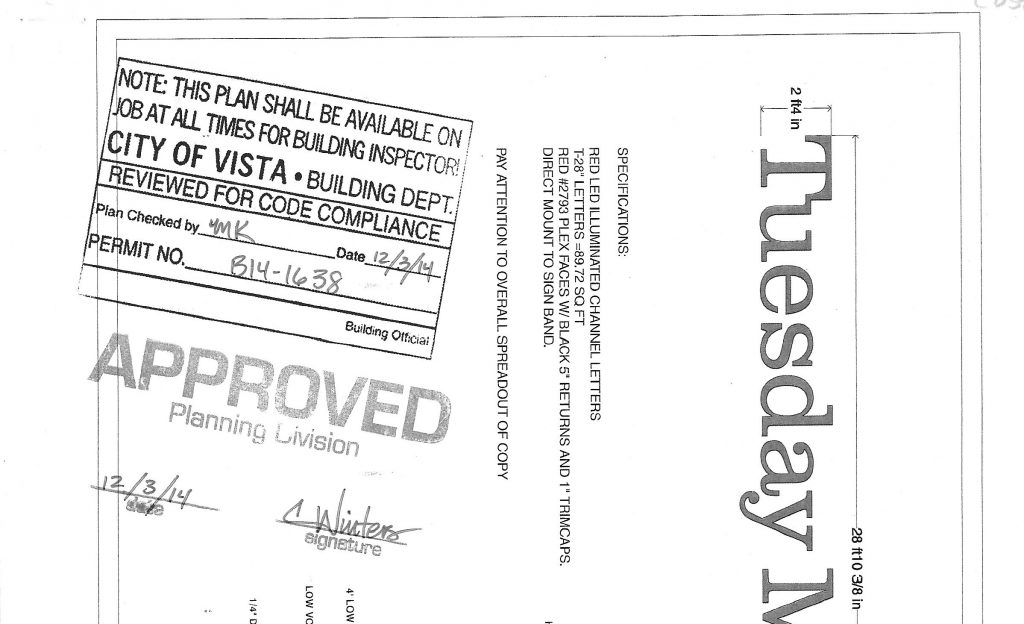Advice for Sign Buyers
Signs for San Diego, a Commercial Sign Company builds a lot of signs for retail shopping centers. People ask for Neon Signs, but what they really want, and need are custom LED Signs, Building Signs that mark location tend to be called Marquee Signs or Marquee Letters.
Want to know where to start?
Many signage buyers are at a loss when they start. What kind of size do you want, what can you have, what is the construction, how big is your sign? These questions seem to have no answers in the beginning, but there are limits. These will help you define what you “can have” and what you want


Things you Need to Know
When you signed the lease, in the back of the lease or as an addendum there is a “sign programs” or a “sign criteria” or “marketing program rules”, or something similar. Your first step is to find this. If you cannot find it there, the property manager will have it. These are the rules and limitations on construction, size, and a whole lot more.
Negotiate BEFORE signing the lease. For some tenants, signage size, placement, and construction can be hotly contested. If you have not signed the lease yet, you may have some leverage. Getting 2 signs for a 2-unit business, getting placement and space of the pylon or monument sign is a possible concession, negotiate for sign twirlers, A frames, window signs (cut vinyl), banners and other outside promotional A well written signage policy helps owners keep their property looking uniform and attractive. It limits non-conformity. Or the other side, property managers and owners want increased traffic. They may be flexible before the lease is signed and have no need to be after the fact.
Signs for San Diego is an expert at writing or rewriting sign criteria. Ensuring that this document is correct is critical to your success. Owners want great tenants to have the flexibility to be anchors, while limiting aggressive tenants that detract from the property’s appeal. Aesthetically pleasing and uniform signage increases high-quality traffic, boosts your tenants’ sales, and the owner’s ROI by enhancing property value, rent, and lowering vacancies.
Sometimes, logos can be a problem. Tenants can have logos that may not be compliant with the shopping center rules. Depending on your situation and the tenant, you may need to be firm or flexible with your rules. For instance, the use of the tenant’s logo may depend on the size and importance of the tenant. You don’t want to lose an anchor tenant over their logo, or have a minor tenant set a negative tone for your shopping center.


Out of date sign criteria? If the policies are older, they may not cover newer technologies such as LED vs florescent or neon signage. In many cases 5” depths are required, but 3” depths may be all that is needed. These requirements date back to Neon and are not modern looking. Digital message centers (DMCs) are the future, but many programs categorize these are traffic distractions. The governments actively use them on highways and in front of government buildings, such as fire stations, schools, and meeting centers. This double standard is easing, but is the sign policy up to date on this?
Ready to start developing your property’s sign program and sign criteria? Contact Signs for San Diego to learn more. Give us a call 760-730-5118




